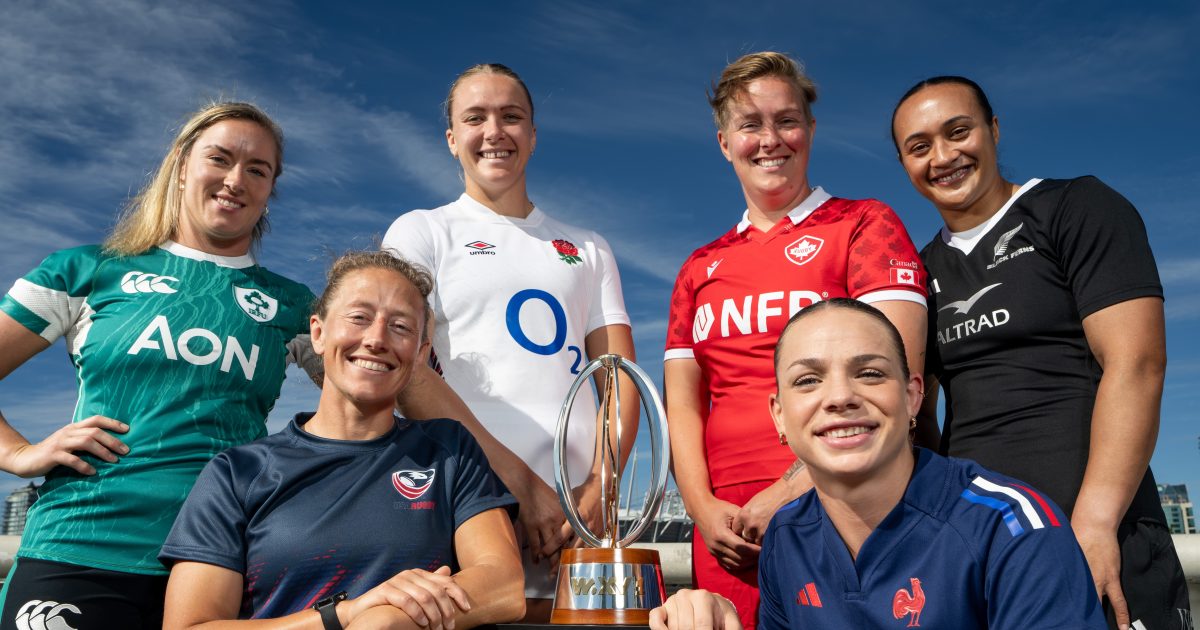‘Need for simplicity’: World Rugby to tweak WXV post-Women’s RWC 2025

On the eve of WXV 2024 World Rugby has said the competition “will evolve and change” before it returns in 2026, with an announcement on its future direction expected as early as the new year.
The second edition of WXV, World Rugby’s 18-team annual global women’s competition, will get underway this weekend in Canada, South Africa and the United Arab Emirates with the final six places at Women’s Rugby World Cup 2025 to be decided.
Launched in 2023 with the aim of raising standards and improving competitiveness on the road to that expanded 16-team World Cup in England, the inaugural edition was staged across New Zealand, Cape Town and Dubai last October and November.
The Red Roses claimed the first WXV 1 title, while Scotland won the second level and Ireland emerged victorious in the third.
Scotland and Ireland have used those campaigns as a springboard to further success, the former rising to fifth in the World Rugby Women’s Rankings while the latter qualified for WXV 1, which gets underway in Vancouver on Sunday.
However, there have been teething problems too and World Rugby Chief of Women’s Rugby, Sally Horrox reiterated on Tuesday that the format has been under review, with participating unions part of that process.
“WXV came into shape as a two-year commitment to take us on a sprint to the Rugby World Cup in 2025.
“So, [it created] foundational building blocks and I think it was absolutely essential that World Rugby took the initiative there to build that increased competitiveness, to build that increased opportunity on and off the pitch for those teams to be together,” Horrox said.
“Our responsibility is to build that global profile in the game, not just with the top-ranked countries. So, it was essential and those foundational building blocks are now clearly in place.
“But we absolutely understand and are working with all 18 unions. They all were in town; we were with them last week. We’ve had a working group all the way through the last 12 months.
“So, we understand and agree that there is a greater need for certainty. There is a greater need for simplicity, there is a greater need for more home content as we all seek to grow the game.
“So, we are confident with our unions that the model will evolve and change. We’ve got some really clear options on the table that have got strong support from the unions, but we’re going to debrief after WXV, this edition, and then we’ll go into the end of this year and then we’ll make some announcements early next year.
“Because what’s critical is that everybody has a clear route from ’25 through the new evolution of WXV and ’26 to ’28 with a clear pathway to qualification for the Rugby World Cup in ’29.”
Red Roses head coach John Mitchell last week voiced concerns over the expected crowd numbers for WXV 1, intimating that the rest of the world has a responsibility to grow attendances to the levels seen in England and France.
Horrox is confident Canada, whose record attendance for a women’s match is the 10,092 set during the 2023 Pacific Four Series, will rise to the challenge of hosting the top level.
“I was there last week at Twickenham, and it was incredible, and we know that the Canadian public, they are learning to love rugby,” Horrox said.
“I was out there for Pac Four when they pulled a 10,000-plus crowd and it was amazing. So, we know they can do it.
“We also know there’s education and they have to work really, really hard in a sports market where rugby isn’t their first sport. We know they’re doing that.
“They’re a great partner, they put their hands up to host this event, they are putting women at the heart of their growth plan for the sport in Canada. So, we’re delighted that we’re working with them.
“But building audience, building fans takes time and it’s still a relatively young sport in Canada. But we’re going there because we’re confident, because they’ve done a good job for us last time.”
Horrox added that while getting fans into stadiums is “really important” to World Rugby, extending the game’s global reach through broadcasters and streaming platforms, such as RugbyPass TV, is “critical”.
The success of the women’s sevens tournament at the Paris 2024 Olympics, which was played in front of sold-out signs at Stade de France, has perhaps done more than any other single event to increase that reach.
Ilona Maher, the breakthrough star of those Games, has made clear her desire to represent USA at next year’s World Cup and Horrox suggested the new global calendar will allow for greater movement between the two formats.
“We’re working with the chief executives of the unions on the men’s and the women’s game, on the future shape of the sevens and 15s game specifically for women,” she said.
“Not everyone will share the same perspective but if I can generalise a little bit, that twin track approach [is an opportunity] provided we can deconflict the calendar sufficiently, which is a critical point specifically in the women’s game.
“Because we see talent transfer between the sevens and 15s game in several markets. Speaking with many of the coaches and the chief executives [they see it] as a real opportunity.
“So, there is player interest in talent transfer. The coaches are educating us and our performance teams in their ability to basically run a core training programme and then allow players to shift provided the calendar allows them to support them in that way.
“So, we see that as an opportunity, but we’ll be player-led and we’ll be union-led in that approach.”
































